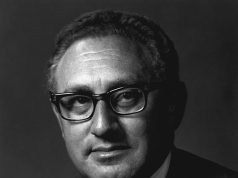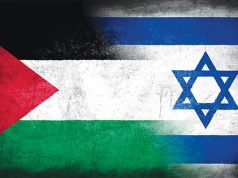
The Israel-Palestine conflict is frequently portrayed as an eternal Hatfields versus McCoys dispute. There is calm now after the fighting.
But Yousef Munayyer, a political analyst at the Arab Center in Washington, D.C., argues that this isn’t a real peace. Writing in the New York Times, he says:
“For years, Israelis have made peace with the notion that they can manage, however brutally, their relationship with Palestinians instead of resolving it. This has been aided by a process of walling off the ugliness of their rule: Gaza, caged and besieged, might as well have been on a different planet; Israelis could drive throughout the West Bank practically uninterrupted by the sight of Palestinians; Palestinian citizens of Israel have largely been relegated to neglected, concentrated areas.
“Out of sight, out of mind. Or so Israel seemed to hope.”
In a new development, thousands of Palestinian citizens of Israel, numbering some 1.9 million people and often referred to as “Arab Israelis,” have taken to the streets to express solidarity for their fellow Palestinians.
They have their own specific grievances. Nadim Nashef, director of Aamleh (The Arab Center for the Advancement of Social Media) and an exponent of Palestinian civil society in Israel, told the Italian magazine Il Manifesto that it isn’t religious hatred that animates the protests, but “concrete factors” like “gentrification, unemployment, discrimination and the eviction of Arab families unable to pay higher and higher rents. All this combined with the penetration (in Arab neighborhoods) of activists from Jewish right-wing organizations.”
Hundreds of thousands of Palestinians recently held a general strike, uniting Palestinians in Israel, the West Bank, East Jerusalem and Gaza.
How did the unrest begin? You get different accounts. The Israeli police invaded the 8th century al-Aqsa mosque in East Jerusalem during Ramadan, teargassing and wounding over 300 congregants with stun grenades and rubber bullets. It is Islam’s third-holiest site. But the police claimed they were responding to rioting. Palestinians and sympathetic Jewish Israelis were protesting house demolitions and evictions. Jewish settlers were actually squatting in their homes.
In a scathing editorial on April 25, the liberal Israeli newspaper Haaretz accused right-wing politicians of inciting hundreds of enraged Jewish teenagers who “rampaged through the city center, attacking passersby and journalists, throwing rocks and bottles at police officers and chanting ‘Death to Arabs’ and other racist slogans.”
Prime Minister Benjamin Netanyahu is on trial for corruption and is trying to hold onto power by welcoming notorious far-right parties into his coalition. There’s Otzma Yehudit (Jewish Power), a party formed in 2012 which is devoted to the ideals of Meir Kahane.
Kahane was a Brooklyn-born rabbi who founded the vigilante Jewish Defense League, which was considered to be a right-wing terrorist group by the FBI. Their targets included Soviet and Mexican diplomats in the U.S., a right-wing Arab-American congressman (apparently due to his ethnic heritage), Arab and Muslim activists, mosques, neo-Nazis, the ACLU and Jewish community leaders who weren’t “Jewish enough.”
In the 1970s, after Kahane was convicted of engaging in a bombmaking plot and given a suspended sentence, he immigrated to Israel and founded the Kach party, which promoted stripping Palestinian Israelis of their voting rights and then expelling all Arabs. Kach wanted to ban marriage, and all sexual contact, between Jews and Arabs, punishable by prison sentences up to 50 years. Kahane was banned from the Knesset in 1988 after one term on grounds of inciting racism. He was assassinated in New York two years later by an Egyptian militant.
In 1994, Kach politician Baruch Goldstein opened fire in a holy site in the occupied West Bank city of Hebron, killing 29 Muslim worshippers and wounding over 100. That led both the Israeli and U.S. governments to label his Kach movement and an offshoot, Kahane Lives, as terrorist groups.
Writing in the national U.S. Jewish newspaper The Forward, Joshua Leifer says that it isn’t surprising that the very Trumpy Netanyahu would turn to the Kahanist party as well as other vile outfits so he could stay in power. Leifer says of the far-right parties:
“They said loudly what many on the Israeli right, at least in the past, preferred to whisper, and certainly never to say in English: that Israel would be a Jewish supremacist state, not a democracy; that the Palestinians would forever live subjugated under military occupation, confined to isolated Bantustans, or they would be expelled from the West Bank and into Jordan; that leftists and peaceniks were traitors, and that traitors would be dealt with accordingly.”
If America wants to be a symbol of democracy and human rights, we have to take a stand. For years, Rep. Betty McCollum (D-Minnesota) has been trying to put conditions on U.S. aid to Israel. She has introduced many bills to do that and hasn’t been successful. She says, “I don’t want $1 of U.S. aid to Israel paying for the military detention and abuse of Palestinian children, the demolition of Palestinian homes, or the annexation of Palestinian land.”
It is about time.
This opinion column does not necessarily reflect the views of Boulder Weekly.














